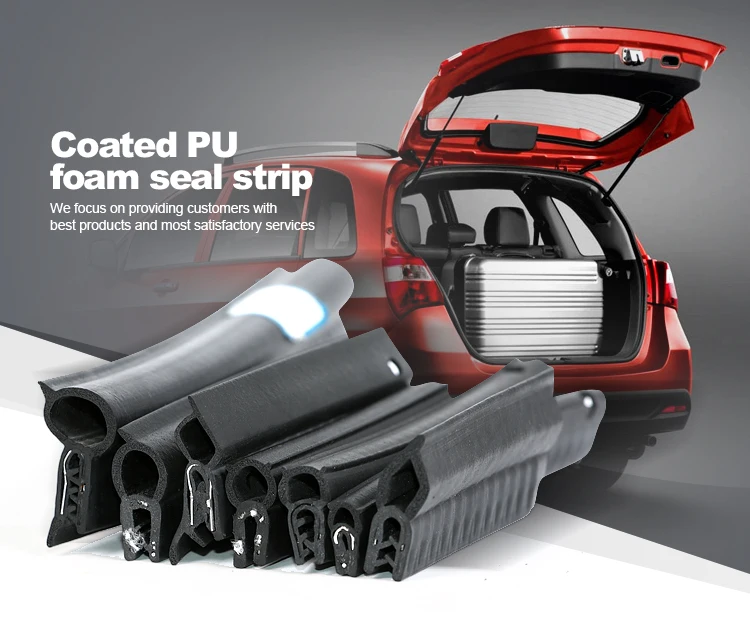Automotive Rubber Seal Strip Manufacturers and Their Production Facilities Overview
नवम्बर . 08, 2024 10:06 Back to list
Automotive Rubber Seal Strip Manufacturers and Their Production Facilities Overview
The Role of Automotive Rubber Seal Strip Factories in the Industry
In the automotive industry, the importance of high-quality components cannot be overstated. Among these critical parts, rubber seal strips play an essential role in ensuring vehicle durability, comfort, and performance. Automotive rubber seal strips provide several functions such as preventing water ingress, reducing noise, and improving energy efficiency. As a result, the factories that manufacture these essential components are vital players in the automotive supply chain.
Understanding Automotive Rubber Seal Strips
Rubber seal strips are designed to create a barrier against external elements. They are commonly used in doors, windows, sunroofs, hoods, trunk lids, and a variety of other applications within a vehicle. These strips are made from various types of rubber, including natural rubber, synthetic rubber (like EPDM, SBR, or CR), and thermoplastic elastomers (TPE). Each type of rubber has unique properties that make it suitable for specific applications. For instance, EPDM is widely used due to its excellent weather resistance and durability, making it ideal for outdoor applications.
Manufacturing Processes
Automotive rubber seal strip factories utilize a range of manufacturing processes to produce these components. The production typically involves the following stages
1. Material Selection Factories must carefully choose the right type of rubber based on the application's specific requirements, including temperature resistance, chemical exposure, and UV stability.
2. Extrusion This is the most common method for producing rubber seal strips. In this process, raw rubber is fed into a machine that shapes it into a continuous strip. The strip can then be cut into specific lengths as per customer requirements.
3. Molding For complex shapes that cannot be achieved through extrusion, factories often use rubber molding techniques, such as compression or injection molding. This allows for the creation of intricate designs that fit precise specifications.
4. Quality Control High-quality production involves stringent quality control measures. Factories conduct various tests to ensure that the seal strips meet industry standards for durability, flexibility, and weather resistance.
5. Finishing and Packaging After the production process, seal strips may undergo secondary finishing processes such as trimming, coating, or adding adhesive backing. Finally, they are packaged and prepared for shipment.
The Growing Demand for Rubber Seal Strips
automotive rubber seal strip factories

As the automotive industry evolves, there is an increasing demand for innovative and high-performance rubber seal strips. Several factors contribute to this growing demand
- Electrification of Vehicles The rise of electric vehicles (EVs) is driving the need for efficient sealing solutions. Rubber seal strips help improve the energy efficiency of EVs by reducing air leakage and enhancing battery insulation.
- Enhanced Comfort Features Modern consumers prioritize comfort, leading manufacturers to incorporate advanced sealing technologies that minimize cabin noise and vibrations. This trend necessitates even more sophisticated rubber seal designs.
- Sustainability Concerns As the industry shifts towards sustainable practices, manufacturers are exploring eco-friendly materials for seal strips. This development has prompted rubber seal strip factories to innovate and adapt their production processes accordingly.
Challenges Facing the Industry
While the demand for rubber seal strips continues to grow, manufacturers also face several challenges
- Raw Material Supply Fluctuations in the supply and cost of raw materials can significantly affect production costs. Factories must navigate these changes while maintaining price competitiveness.
- Technological Advancements As automotive technology evolves, so too must the manufacturing processes and materials used for rubber seal strips. Staying ahead in terms of technology requires constant investment in research and development.
- Regulatory Compliance Manufacturers must adhere to various regulations and quality standards imposed by automotive industry guidelines. Compliance requires ongoing investment in quality control and environmental management systems.
Conclusion
Automotive rubber seal strip factories are integral to the automotive supply chain, playing a critical role in the functionality and comfort of modern vehicles. As the demand for innovative and sustainable solutions continues to grow, these factories are positioned to adapt and thrive in an evolving industry. By focusing on quality, technological advancement, and sustainable practices, rubber seal strip manufacturers can meet the demands of a changing market while contributing to the overall improvement of vehicle performance and consumer satisfaction.
-
Top Window Seal Strip Adhesive Companies for Quality Sealing Solutions
NewsJul.22,2025
-
HighTech Injection LED Module Size 6414 - Efficient, Durable Lighting
NewsJul.22,2025
-
Top Window Seal Strip Adhesive Companies | Durable Weatherproof Seals
NewsJul.21,2025
-
Premium Car Trim Strip - Top Car Moulding Trim Strip Exporters & 3 Car Moldings Manufacturers
NewsJul.08,2025
-
High-Quality Sponge Seal Solutions Leading Sponge Door Seal Manufacturer & Service
NewsJul.08,2025
-
U Shape Chrome Trim Strip Manufacturer & Exporter High-Quality Factory Products
NewsJul.07,2025
